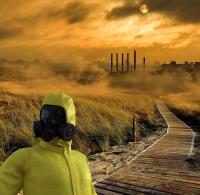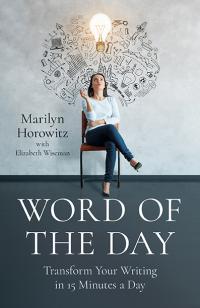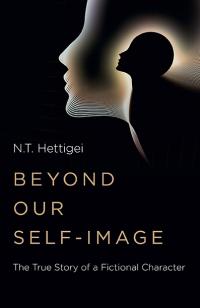
With a Little Foresight, we’ll be Better Prepared Next Time
by Bart W. Édes, author of Resetting Our Future: Learning from Tomorrow
The coronavirus (COVID-19) pandemic has killed more than 2.4 million people, precipitated the greatest economic downturn since the Great Depression, caused widespread unemployment, derailed progress toward the Sustainable Development Goals, and left scars that will take many years to heal.
We could have seen it coming. This is difficult to accept, but we must take a hard look at how unprepared we were for something that was not really so hard to foresee. Only in this way can we do better in the future. We have the tools to do better; we can’t afford not to use them.
Epidemiologists warned us time and time again that another global pandemic was on its way. In 2015, Bill Gates delivered a TEDx presentation in which he called for scenario planning and other steps to prepare for the inevitable next pandemic.
The spread of another dangerous virus is one of many disruptions that could shake up our lives in the years ahead. While we obviously cannot predict with certainty what the future will bring, there are tools and methodologies that we can use today to identify weak signals of change, trends, drivers of change, and, ultimately, scenarios for the next ten to twenty years. These are brought together in the multi-disciplinary approach known as Strategic Foresight.
Strategic Foresight is a structured and systematic way of using ideas about the future to anticipate and better prepare for change. It involves the exploration of different plausible futures that could arise, and the opportunities and challenges they could present. Through Strategic Foresight, we gain insights that can help us make better decisions and to take action.
Strategic Foresight brings together insights from different fields – economics, systems theory, engineering, sociology, and others. It investigates change from a systems perspective that recognizes that a system consists of parts, and that those parts and the overall system, interact with each other. Strategic Foresight examines how the interactions take place and what they generate. It is not straight-line forecasting, which uses historical figures and trends to predict the future.
In situations of uncertainty, Strategic Foresight provides a structured way to study how events will unfold. In doing so, it can bring a certain steadiness to decision-making systems tested by turbulent events and transformational changes to the economy and society. Strategic Foresight has become an increasingly established field of practice with a professional cadre of experts aiding organizations seeking to benefit from it.
Today, Strategic Foresight is being used to improve understanding of demographic change, consumer values, impacts of climate change, scientific and technological discoveries, military strategies, employment generation, and key sectors of the economy – education, energy, finance, health, housing, transport, tourism, and others.
My pandemic-inspired book – Learning from Tomorrow: Using Strategic Foresight to Prepare for the Next Big Disruption – describes how public, private and non-profit organizations are using Strategic Foresight to build resilience, improve agility, and revamp their strategies to be better prepared to compete and perform in the coming years.
In Learning from Tomorrow, I explain how to introduce Strategic Foresight into your organization and the key steps involved in conducting a Strategic Foresight exercise. It also provides examples of how Strategic Foresight has been applied in numerous contexts, as well as free online resources to skill up staff and “future proof” organizational decision making.
The European Commission used Strategic Foresight to develop understanding of the trends and drivers impacting the European Union Customs ecosystem, as well as possible paths for how this system could evolve by 2040. The exercise involved dozens of people with a stake in the Customs system in Europe. It used a range of Strategic Foresight methods, including horizon scanning, a Real-time Delphi survey, scenario building, visioning and road mapping, to shape the newly adopted EU Customs Union Action Plan.
Learning from Tomorrow is essential reading for those responsible for strategy development, risk management and planning in their organizations. It explains that a competent Strategic Foresight set-up is effective at collecting, analyzing and interpreting data and information; identifying how different drivers of change interact with each other and create more changes; and developing alternative plausible scenarios based on what has been learned.
The Strategic Foresight process then involves developing plans and strategies that take into account those scenarios, and undertaking effective implementation, monitoring and evaluation of actions taken based on the learnings generated from a Strategic Foresight exercise.
Learning from Tomorrow also presents an intriguing selection of fascinating scenarios for a post-pandemic world, developed by foresight specialists, futurists, and business management and intelligence experts over the past 12 months. These carefully crafted scenarios will prove valuable anyone attempting to make sense of what our world might look like after COVID-19 has been brought under control.
READ Resetting Our Future: Learning from Tomorrow
New Chapter for Amnesty International
You may also enjoy
Resetting Our Future: Power Switch
It is totally possible that with transformative activism we can not just restore the pre-crises order, but transform it.
Categories:
0 comments on this article















